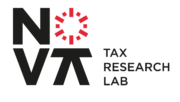As tax management by the administration increasingly assumes a successive, occasional, and supervisory character, the assessment of taxes becomes primarily entrusted to taxpayers. This is made possible by a tax procedure structured around a self-assessment system that allows for a certain degree of private management of fiscal risk, with subsequent procedures being focused on the administration’s duty to uncover the material occurrence of tax facts.
Thus, companies prepare their commercial balance sheets, calculate the taxable profit, assess the tax due, report it to the administration, and remit it to the State’s coffers through various forms of advance payment, often without any intervention from the administration. Additionally, they also act as peripheral services of the administration by withholding various taxes at source, related to the operations they are involved in: they withhold income taxes from the salaries paid to their employees, charge VAT on the sale of goods and provision of services, which after deducting the VAT paid on purchases, they remit to the State’s coffers. They also assess stamp duty due on their operations, the property taxes due for the vehicles and the real estate they own. With taxes almost always paid in advance, the reimbursement of amounts pre-paid by the taxpayer now becomes the rule. With the increasing complexity of the forms to be submitted, these reimbursements tend to increase or decrease according to the taxpayers’ familiarity with those forms, and the tax laws they are made to comply.
In addition to reducing the costs inherent in the tax assessment and collection system, freeing up resources for the auditing of suspicious cases, this increased accountability of individuals has led, as seen in the North American system, towards granting the compliant taxpayer with the right to be taxed according to their own declaration. This contributes to reducing the excessive interference of the administration with the law-abiding citizen. More than a condition of system effectiveness, the self-assessment of taxable income by individuals allows for a more effective protection of their rights, with increased determinability and predictability of tax law, providing all the necessary coordinates for the calculation of the tax due in a manner that favors voluntary compliance without the need for administration intermediation. This is done with the reinforced security that, as long as the taxpayer continues to spontaneously fulfill their primary and secondary tax obligations, they will not be subject to unjustified controls by the administration.
Therefore, the proper application of tax law increasingly becomes both a task and a right of the taxpayer, implying a shift of the administration’s authoritative intervention to cases where controversy exists within the scope of the tax-legal relationship. This paradigm shift, requiring that the normal application of tax law be carried out less by specialists, and more by the taxpayer further demands that the legislators adjust the content of tax laws to their widespread application and endow them with increased requirements for clarity and internal coherence. This is to ensure that the exponential increase in the number of individuals applying tax regulations does not lead to a corresponding increase in the interpretations given to legal texts.
A paradigm that is today under the unbearable pressures of the new economy and the (still) ongoing transmutation of modern tax states into debt states.
José Avilez Ogando
July 2024
